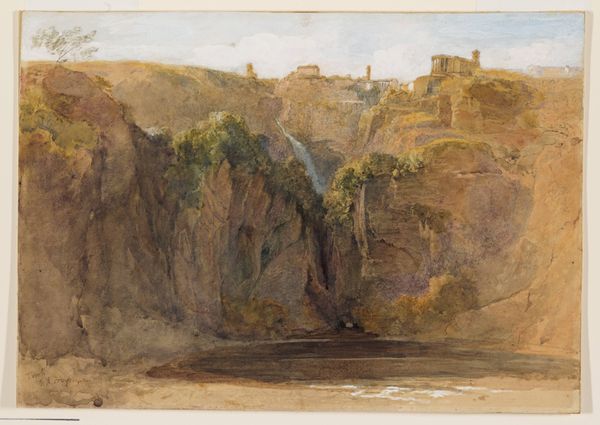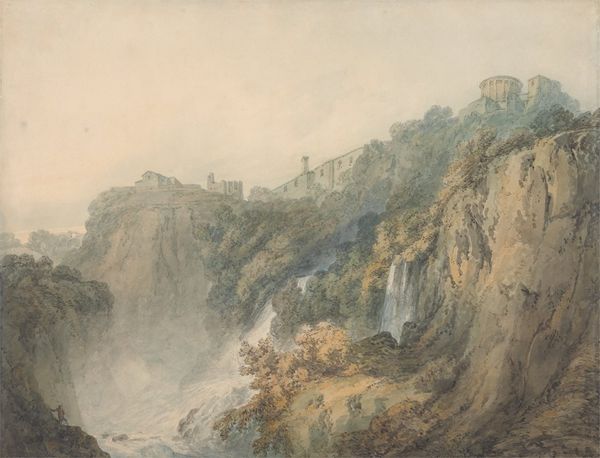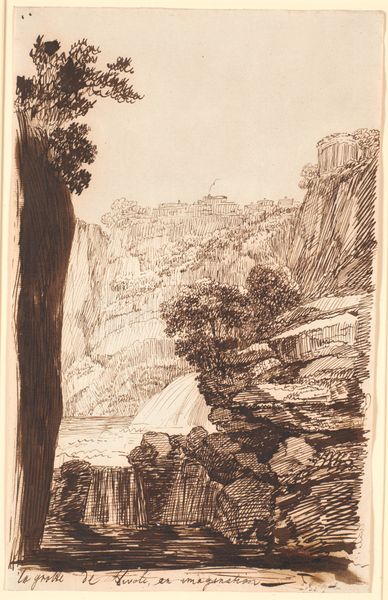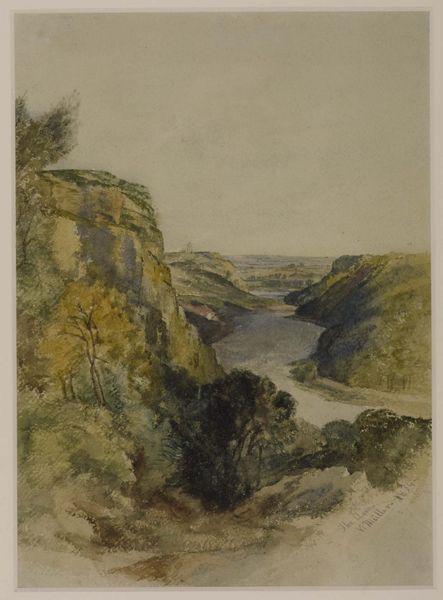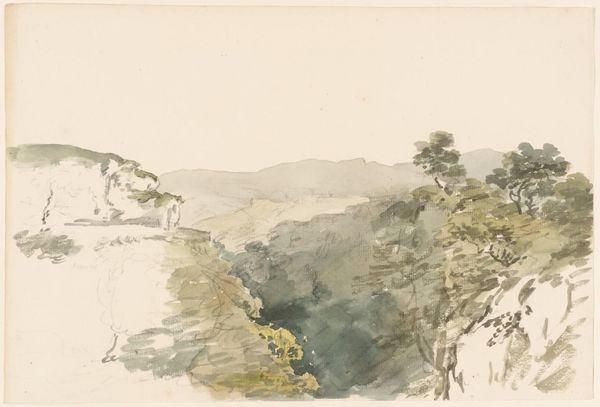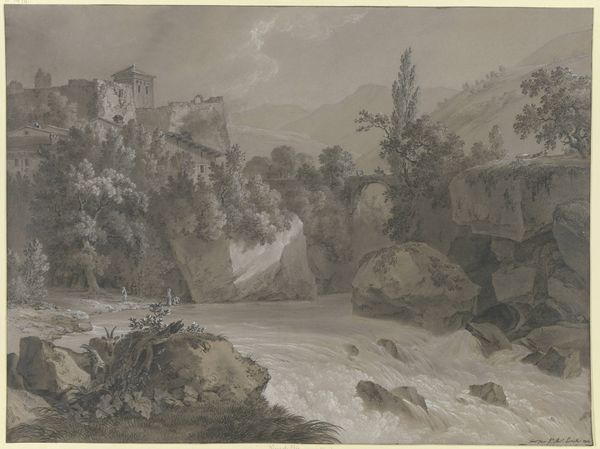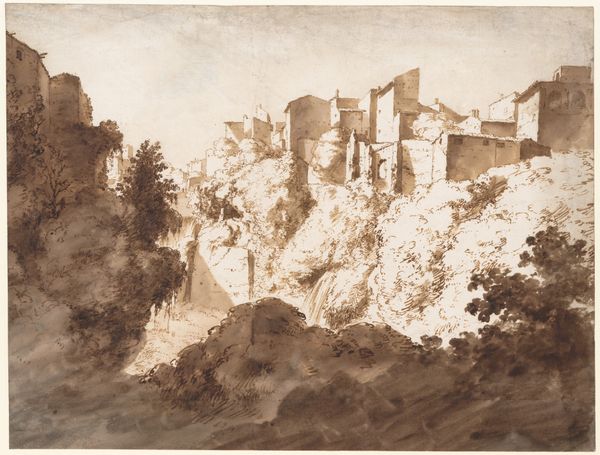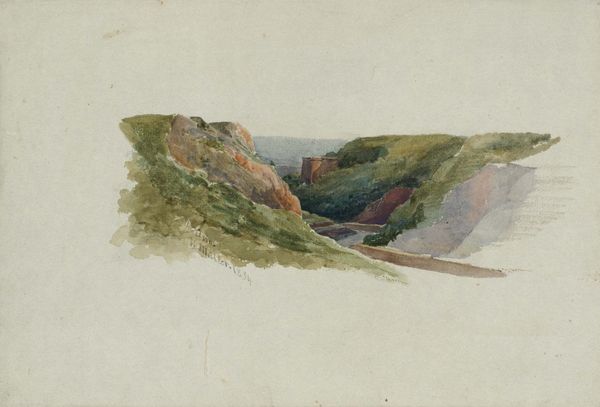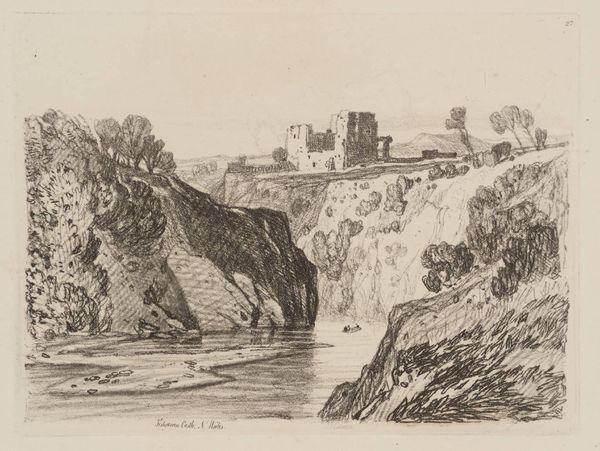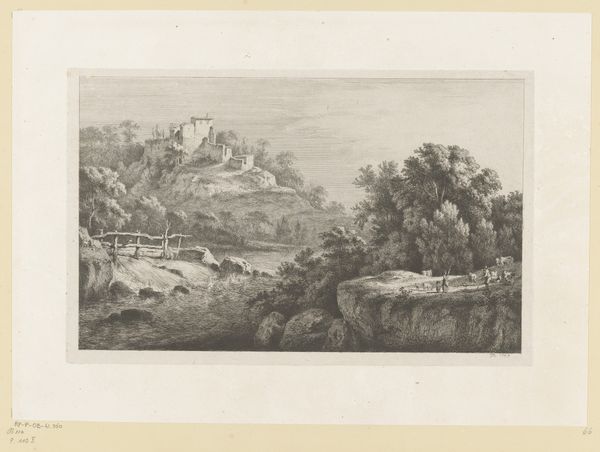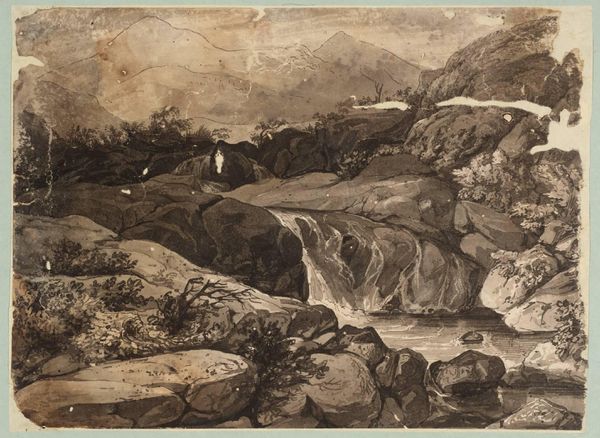
Dimensions: support: 276 x 405 mm
Copyright: CC-BY-NC-ND 4.0 DEED, Photo: Tate
Curator: William James Müller's watercolor, "Tivoli, with the Temple of the Sibyl," presents a sweeping vista rendered with fluid brushstrokes. Editor: It's immediately striking—the romantic ruin perched above that gorge evokes a sense of the sublime, doesn't it? The weight of history, the power of nature... Curator: Indeed. Müller's handling of the watercolor medium is fascinating here. Notice the paper itself—its texture and absorbency directly inform the work's atmospheric quality. And consider the social context: picturesque views like this became increasingly accessible to a broader audience through printed reproductions. Editor: The temple itself acts as a potent symbol. Sibyls were prophetic figures, bridging the mortal and divine. Its presence atop the cliffs speaks of seeking guidance, perhaps in the face of nature's overwhelming power. Curator: Precisely. The artist harnesses the means available to him—paper, pigment, and the rising tide of tourism—to craft a tangible commodity of the romantic ideal. Editor: It makes you contemplate the enduring human quest for meaning amidst the grandeur and the ephemerality of existence. Curator: A satisfying tension between production and symbolic weight then. Editor: Absolutely, a lot to unpack in something so seemingly straightforward.
